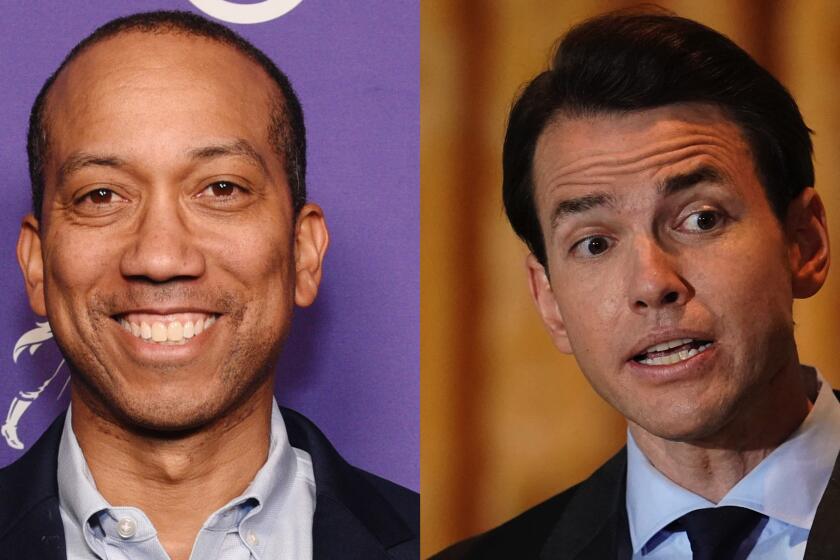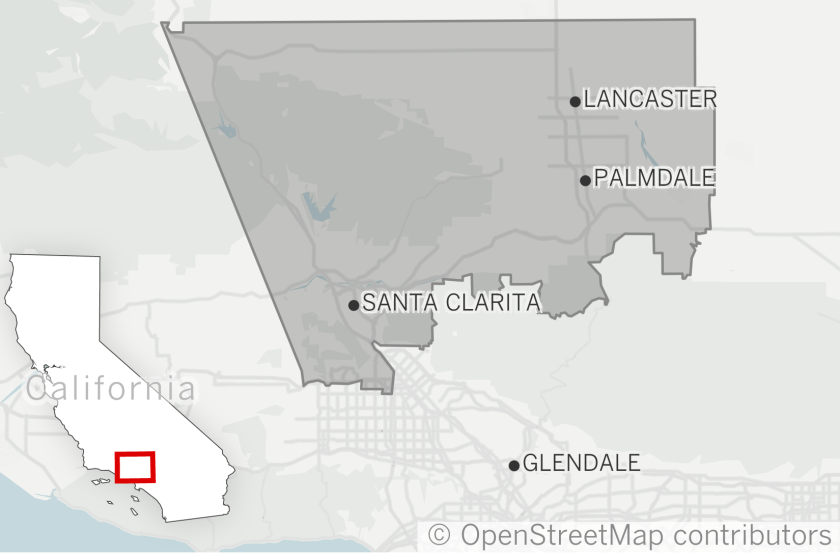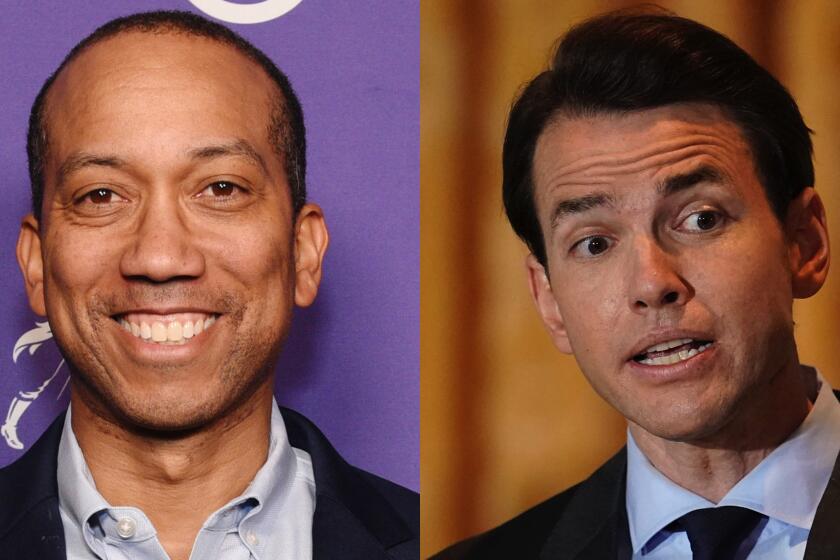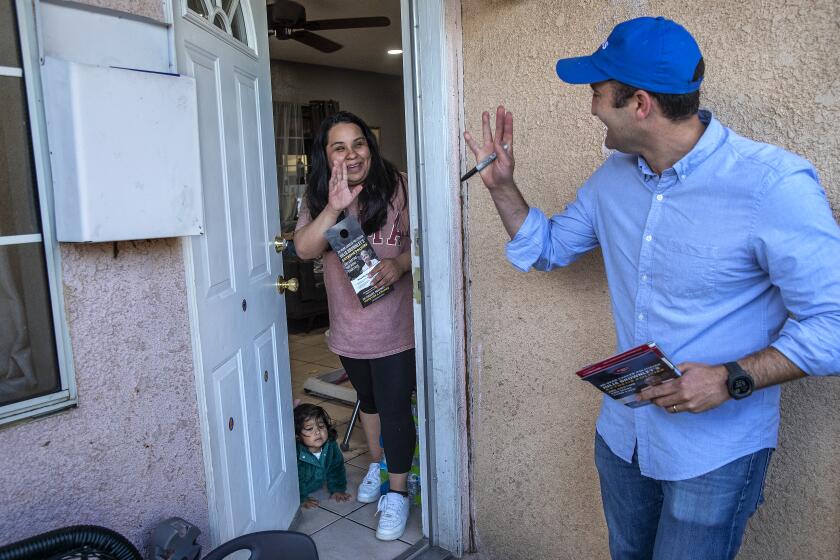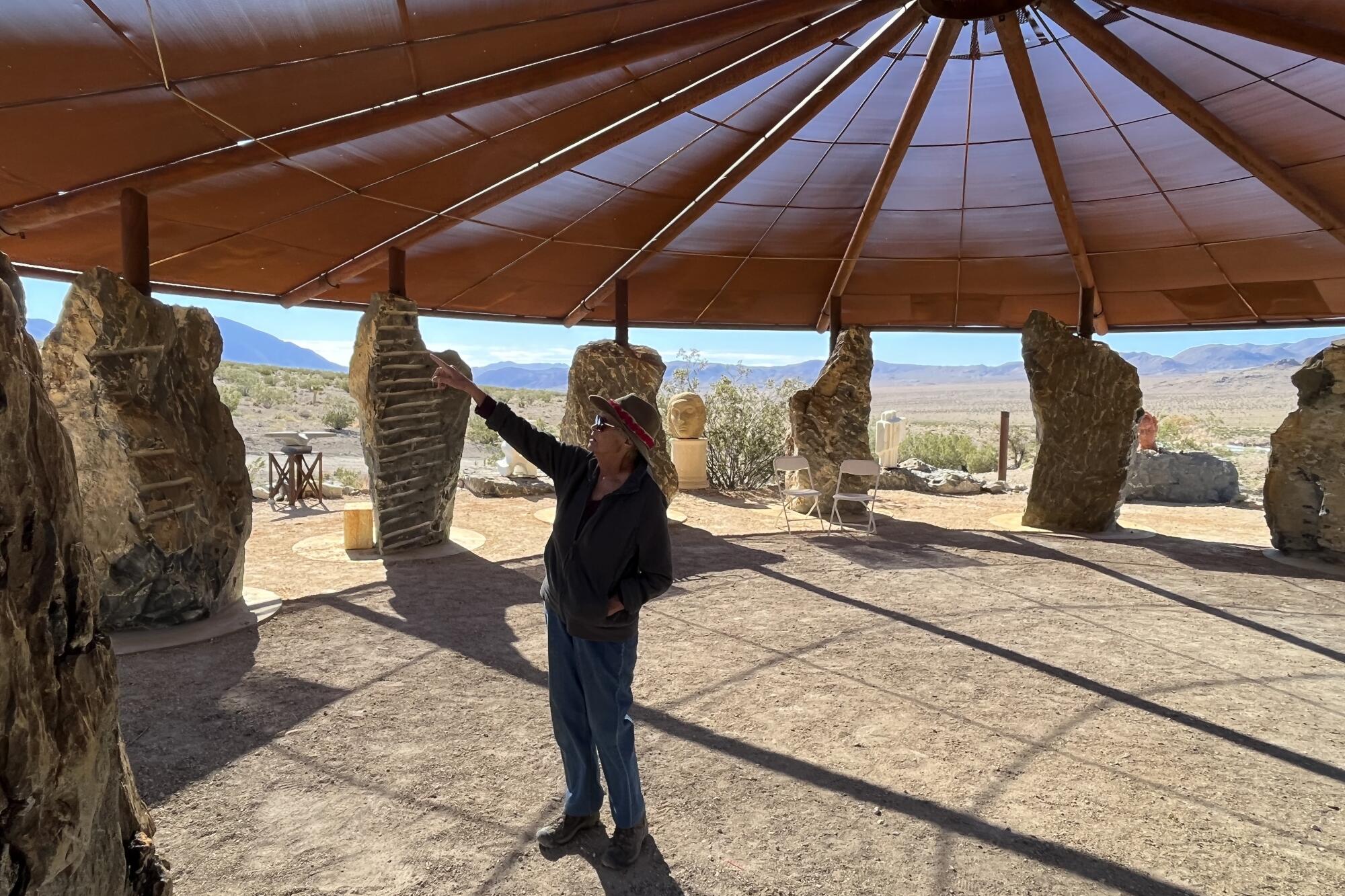
DARWIN, Calif. — A little before noon on a recent Wednesday, residents of this improbable town halfway between Death Valley and Mt. Whitney gathered in front of the post office after the morning delivery.
For the last month their ritual has included tossing out campaign fliers and wondering how strangers can presume to know what’s best for them. Today’s conversation, however, turned on a friend who had just died and whether the road to the cemetery, rutted by August’s rains, was passable.
Perched on a broad alluvial fan dotted with rabbitbrush and Joshua trees, this ragtag community of artists, misanthropes and urban transplants has little time for politicians.
“We’d welcome them if they visited,” said Jim Hunolt, his dog, Sabi, at his side, “but we’d be just as happy if they didn’t know we existed at all.”
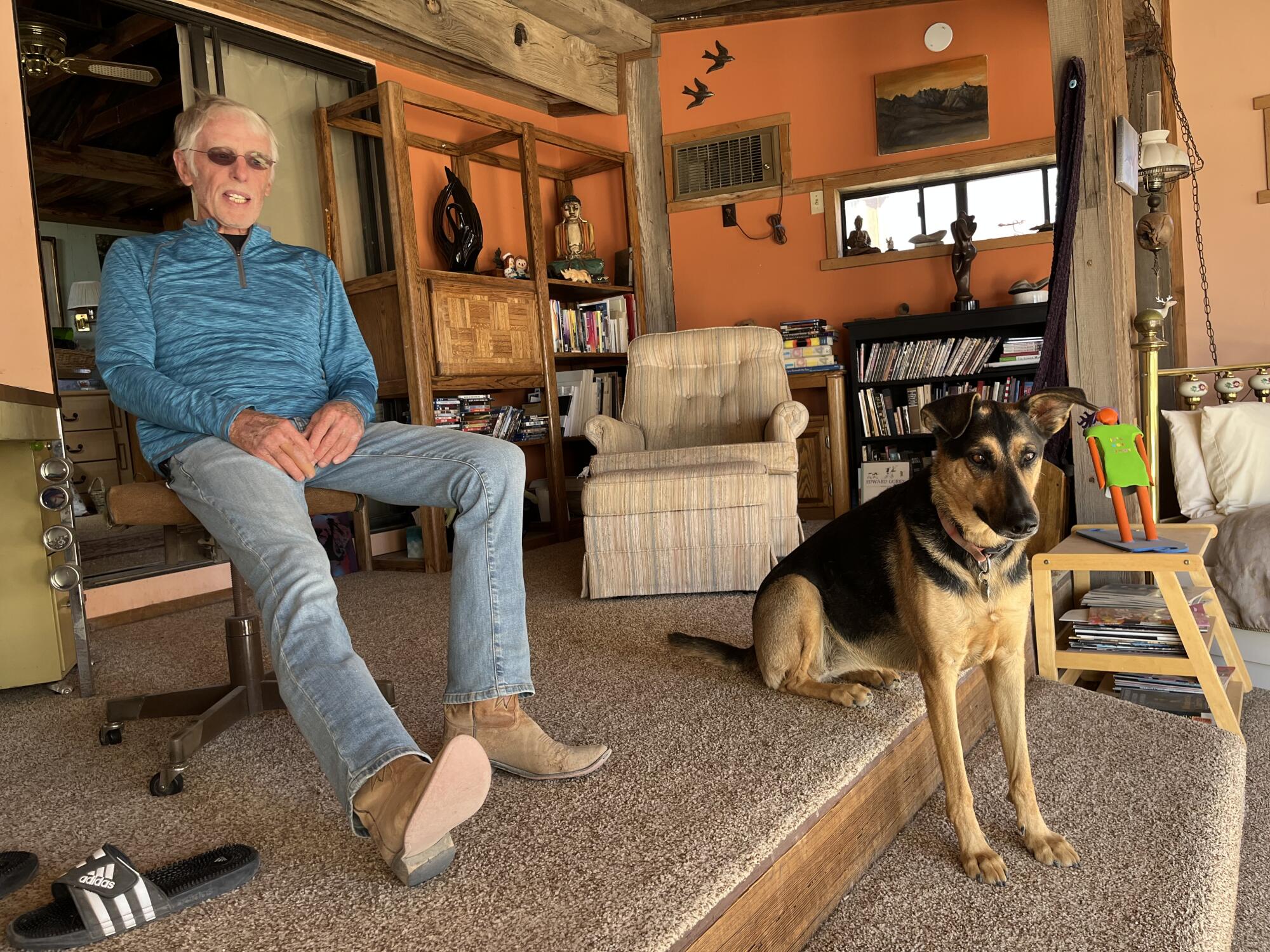
Hunolt’s happiness is likely to remain unchallenged. Darwin — population 35 — is one of the most easily ignored ZIP Codes in California, and a new congressional district, laid out last year in response to the 2020 census, will probably do little to change this.
Nearly 450 miles long, the 3rd Congressional District contains scores of small towns like Darwin from its southern border in the Mojave Desert where Inyo and San Bernardino counties meet, along the eastern slopes of the Sierra Nevada, the western shore of Lake Tahoe, to the southern Cascade Range where Plumas County ends.

In a deeply divided nation, the one thing unifying Americans is a shared sense of unease. Vast majorities feel the country is heading in the wrong direction, but fewer agree on why that is -- and which political party is to blame. This occasional series, America Unsettled, will examine the complicated reasons behind voters’ decisions in this momentous and unpredictable midterm election.
Two candidates — Republican Assemblyman Kevin Kiley and Democrat Dr. Kermit Jones — are vying to represent the district. Both are from the Sacramento suburbs, adding to Darwin residents’ suspicions.
“Representatives don’t understand the nature of people who are this remote,” said Judyth Greenburgh, who’s lived here since 2008. “Either district — old or new — can’t really understand what it is like to be so far away from everything.”
But some wonder if it matters. The 3rd District chips into some of Sacramento’s larger suburbs to the east and north. Folsom, Roseville and Rocklin provide more than a third of the residents needed for the district to meet the population-760,000 requirement of every congressional district in the state, creating a demographic imbalance.
What to know about the California congressional race between Democratic physician and Navy veteran Kermit Jones and GOP Assemblymember Kevin Kiley.
“We thought it was strange that the district ended up as long and thin and diverse as it did,” said Kerri Howell, mayor of Folsom. “People were surprised that the Sacramento region was carved up as it was.”
California’s political landscape has long been defined by a divide between liberals in the cities and conservatives in the country. But by sharpening these distinctions, the 3rd District questions the assumption and asks whether urban and rural voters might have common legislative goals.
“The remapping of Congressional District 3 will force a connection between city and country whether we like it or not,” said Howell. “If people in Inyo County didn’t know Folsom existed and didn’t care, they will now, and vice versa.”
The district puzzle
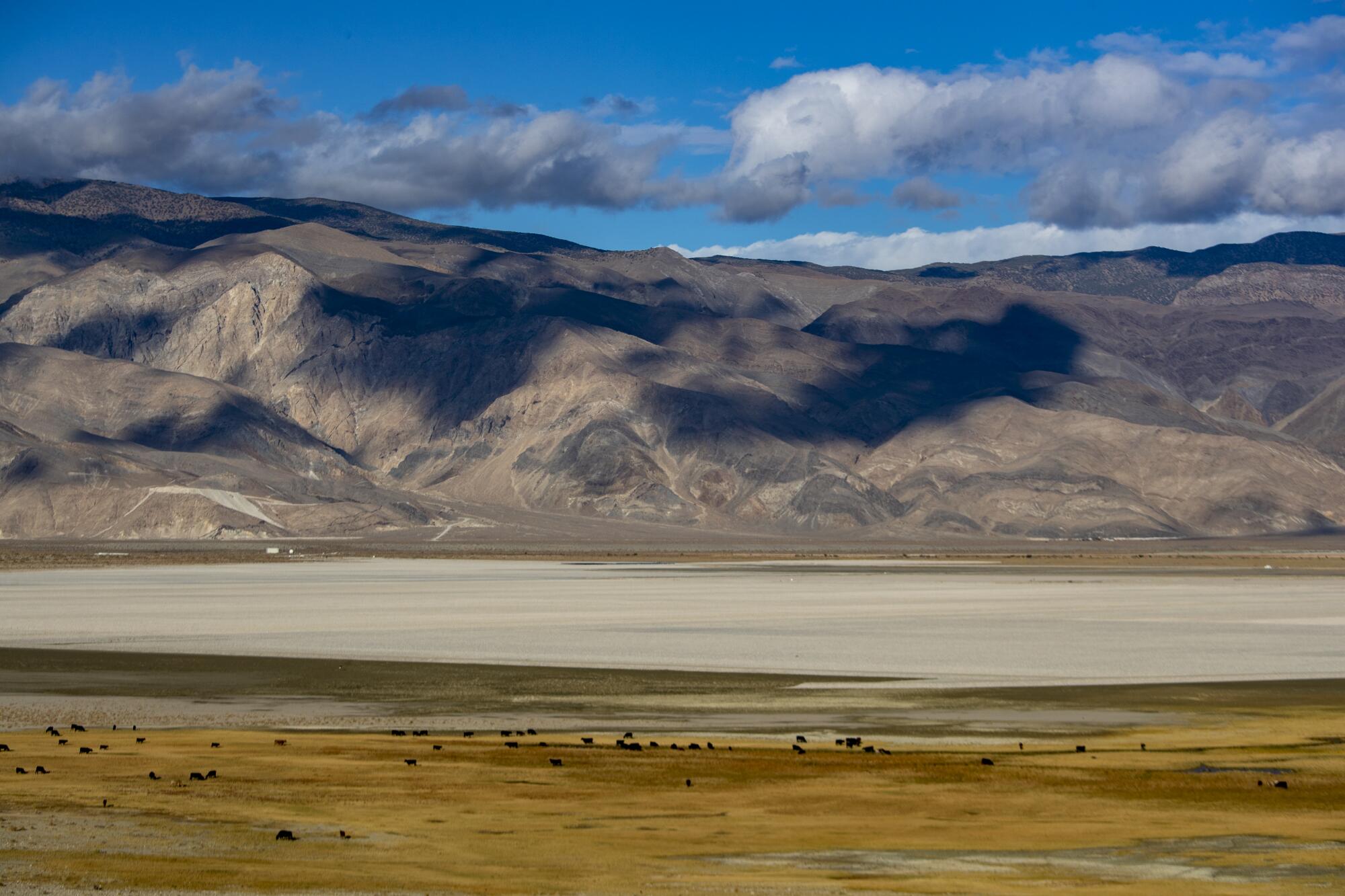
When the state’s redistricting commission began drawing its congressional maps a year ago, few of the 52 jigsaw pieces occasioned more debate than the 3rd District, said commissioner Sara Sadhwani.
Virtual public meetings and online forums helped guide early drafts. Opinions were sharp over the inclusion of “tract home suburbia,” as one anonymous post declaimed, with its “shopping malls [and] mega churches.”
“The city of Roseville point blank does not belong with the communities of the Sierras,” continued the writer. “...Just because you visit Tahoe on the weekends doesn’t mean you’ll fight for the same issues residents face. Trust me, I’ve picked up enough trash from visiting ‘flatlanders’ following Instagram geotags to prove it.”
But the rural population of the eastern Sierra and Mojave Desert is not large enough for its own district, so commissioners had to make a choice. “At the end of the day, you know you’re not going to satisfy every community of interest,” said commissioner Alicia Fernandez.
Of all zigs and zags in the boundary, none is more pronounced than the peninsula-shaped appendage of Folsom with its 82,000 residents. The city had previously been in a district south and east of Sacramento and more Democratic.
But the city’s mayor is less worried about the political shift than the economic disparity the new map reveals. Howell contrasts Folsom — with its employers such as Intel and Micron — with smaller cities and towns whose economy is seasonal. She notes ambitious transportation projects in her area that will need lawmakers’ attention.
“The more differences you have,” she said, “will make it more difficult to represent the best interests of all these people, so the congressman will end up going from one subject to the next to the next to the next.”
In the November midterm election, California is one of the battlefields as Democrats and Republicans fight over control of Congress.
Kermit Jones has attempted to address these subjects with an itinerary that, while focusing on the Sacramento area, has included Greenville to the north and Bishop to the south. Traveling through the district, he said, he has been surprised by “how consistently people felt they were not truly represented.”
A former Navy flight surgeon twice deployed to Iraq, Jones was stationed at Camp Pendleton and came north to summit Mt. Whitney three times.

“People look at the Sierra and see one of the most beautiful areas of California,” said Jones, who works as a family physician. “But I see an area not given its due by the federal government. There are Native American communities looking for federal recognition. You have the Dixie and Caldor fires. This district is a microcosm of the serious problems we are facing elsewhere in the state that need to be addressed.”
In California election ads, Democrats running for Congress spotlight abortion access after Roe vs. Wade’s overturn; Republicans focus on inflation.
In a district that is nearly 80% white and where Republicans outnumber registered Democrats by nearly 6 percentage points, Jones has campaigned on healthcare, broadband infrastructure and a federal fire insurance plan.
Kevin Kiley, whose campaign didn’t share his itinerary with The Times or make the assemblyman available for comment, speaks of communities in a district “where we have a quality of life — and we have maintained a quality of life — that doesn’t exist in other parts of California.”
Endorsed during the primary by former President Trump, Kiley has argued for securing the border and against COVID-19 mandates and voted against an abortion rights measure. He was a state deputy attorney general before being elected to the Assembly in 2016 and ran for governor during last year’s recall election.
The Lost Sierra
Almost 35 miles from the district’s northernmost boundary, the town of Quincy is nestled amid conifers, broadleaves and canyons carved by tributaries of the Feather River. Residents refer to their part of the state as the Lost Sierra because it is hard to get to and easy to overlook, said Katie Desmond, a political science professor at Feather River College.
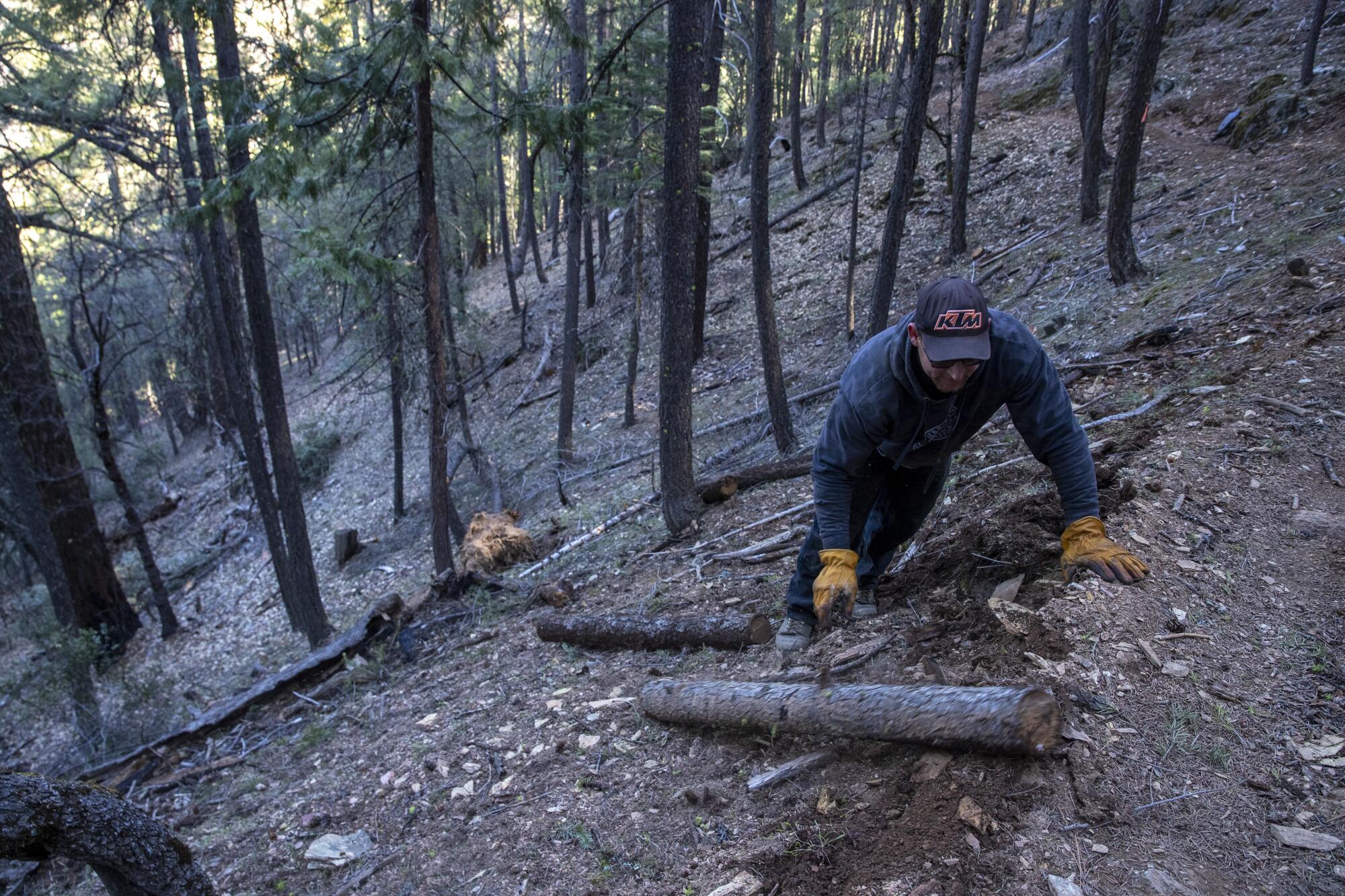
Residents she knows have no expectations for whoever wins the election. “How do you get your voice heard when you’re not sure anyone is listening?”
Still, Desmond wonders if there isn’t a fine line between what people want — to be left alone — and what they think they deserve: resources to fight fires, services to fight addiction.
Quincy, she said, is at risk: Its tourism economy — mountain biking — is seasonal, and the U.S. Forest Service, the county and the local sawmill barely support the town’s retail, especially as residents turn to Amazon and the 90-minute drive to Reno for groceries, clothing, even healthcare.
“We’re competing against the world,” said Desmond. “There is no money in this county, and we struggle to pay county employees a livable wage whether they’re in public health or social services or our sheriff department or schools.”
What sustains the community is its connection to the land. Ask the equipment operators, hunters or outdoor enthusiasts what they care about, said Desmond, “and they’ll tell you they love these mountains.”
The 3rd District is a postcard to the rugged beauty of California, eliciting a near-reverence for the mountains, forests and deserts that rises above politics.
“Whether we’re staunch red or staunch blue voters, we have this in common,” said Shawn Lum, administrator for the Eastern California Museum in Independence. “Whether we leave it alone or tap it, we still agree that we should appreciate it.”
Lum is referring to the city of Los Angeles, which has long tapped into the water of Owens Valley. Like many of her neighbors, she is conflicted: The lack of water has impoverished the valley yet kept it undeveloped. Still, residents know they must be vigilant.
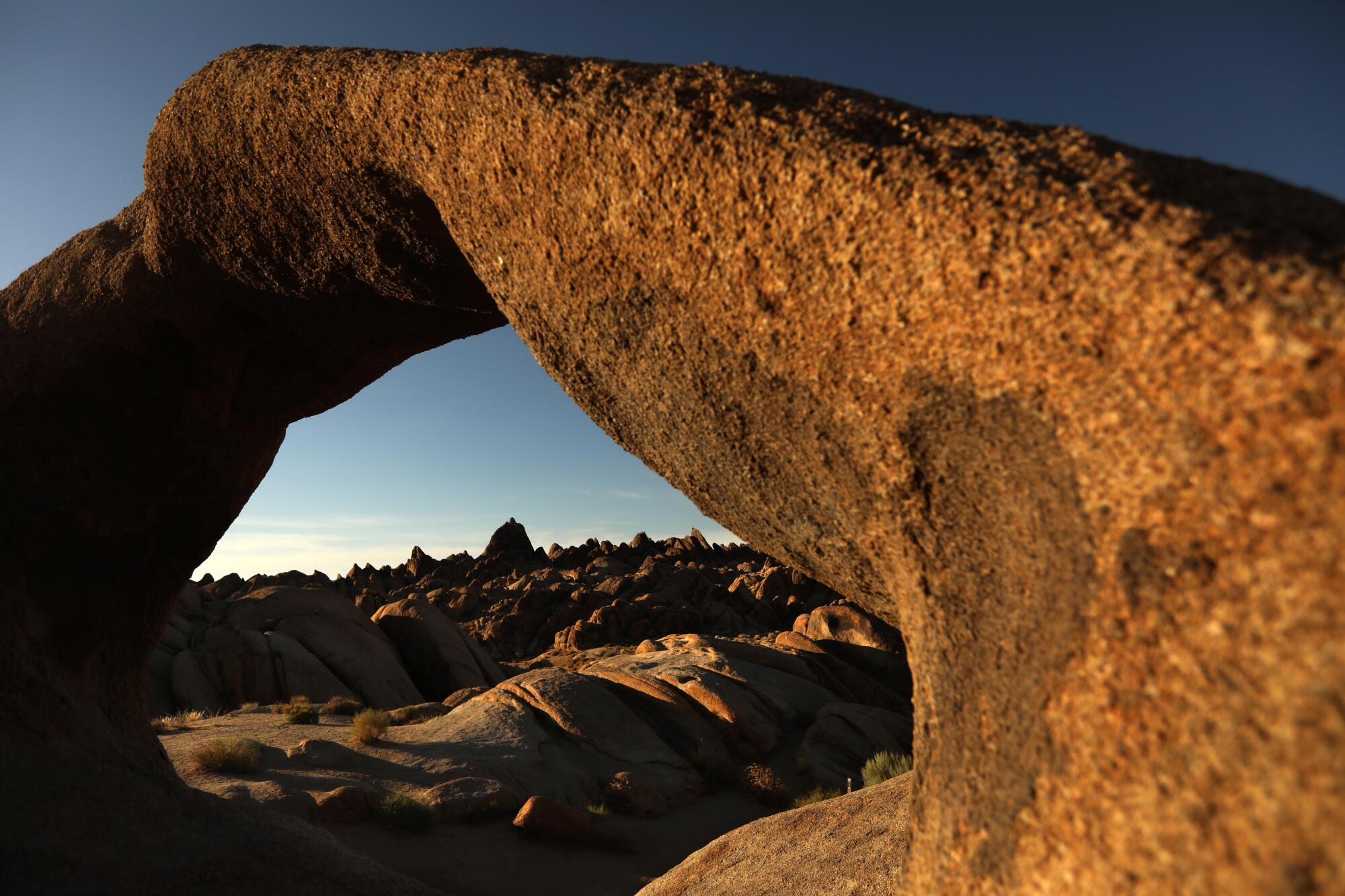
“Living out here is all about the beauty of the place, but the world is encroaching,” said artist Jael Hoffman, who lives in Olancha and campaigned against a 20-acre solar farm built across Highway 395 from her sculpture garden.
Joyce Kaufman, who lives in June Lake, described people fleeing the cities during the COVID lockdowns. “Some are second-home owners. Some were looking for places to rent and decided to stay.”
The influx has driven up housing prices and “created a different kind of tension,” she said, adding that some service sector employees in Mammoth commute 40 minutes from Bishop.
Throughout the district, affordable housing is at a premium. The Dixie fire, which destroyed hundreds of homes, has strained local resources, said Summer Cunningham, a family advocate with the Plumas Crisis Intervention & Resource Center. “We just don’t have enough rentals.”
“Like anything, if you take a closer look,” said Lum, “you will see similar issues in our urban and rural areas like social justice, homelessness, immigration, education and education equity. We have a lot in parallel; we just experience them at a different scale.”
Wildfire fears
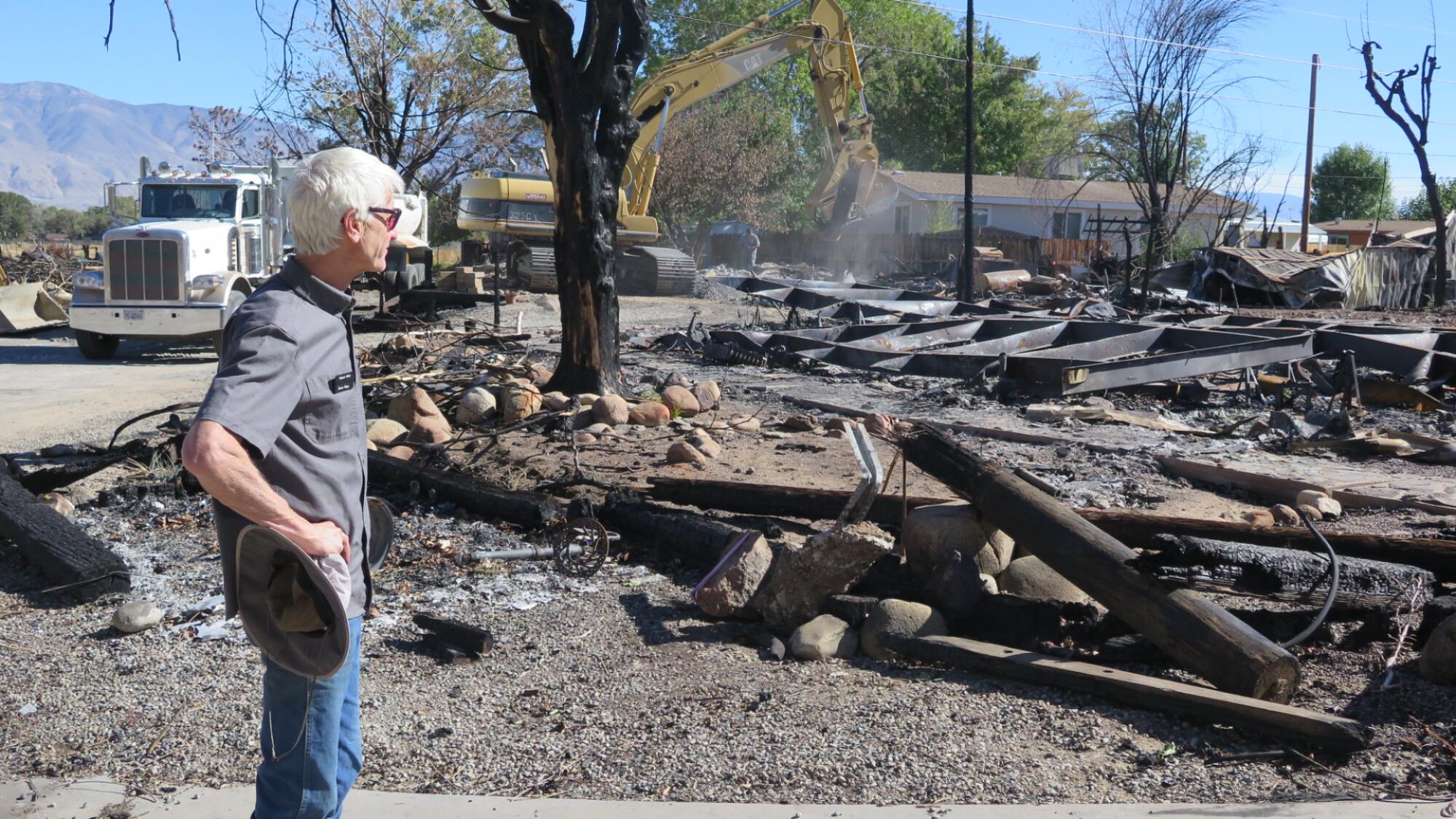
At the Tuesday Rotary meeting at Astorga’s Mexican Restaurant in Bishop, the 3rd District was up for discussion. A few members hadn’t seen the map.
“Oh, my gosh,” said one. “It looks like a seahorse.” Another suggested a dragon and another a chicken head.
What everyone agreed on, however, was that Inyo County was again the tail end of its congressional district, a position that over the decades has cultivated a streak of conservative pragmatism.
“We don’t look to the government to solve our problems,” said Randy Van Tassell, an accountant. “We don’t want someone on a white horse to ride in and save us. Provide us with the money — we’re taxpayers — and we will come up with our own solutions.”
After the meeting, Robert Atlee took a brief detour before heading home. Two days earlier, a brush fire scorched an empty field northwest of town. Fire crews were still on site, watching for hot spots.
The stances of Kevin Kiley and Kermit Jones, candidates in a vast California congressional district, on abortion, healthcare, immigration, gun laws.
Atlee, who has lived in Bishop for 40 years, nearly lost his home in the 2015 Round fire, which destroyed 53 structures. That blaze, he said, inaugurated a new era of wildfires. “We’d had forest fires before that threatened local communities and took one or two structures, but they never took whole neighborhoods.”
In July, a fire swept through West Bishop, destroying nine homes.
Wildfire, climate change and forest management provide common ground for residents of both rural and urban communities. The Caldor fire burned within 25 miles of downtown Folsom, said Howell. “There were days when you couldn’t see your hand in front of your face. The smoke and ash were horrible.”
Federal holdings throughout the district, especially in Inyo and Mono counties, make homeowners feel vulnerable to the fires and their repercussions. They would like help with insurance companies that either charge a premium or are unwilling to provide coverage.
South Lake Tahoe resident Susan Chandler is also sensitive to cuts in the Forest Service’s budget during the Trump administration and looks forward to new funding and hiring. She wants to see more resources go to managing forests and fighting fires without stretching the agency so thin.
“They are overworked,” she said.
‘They’ll never understand us’
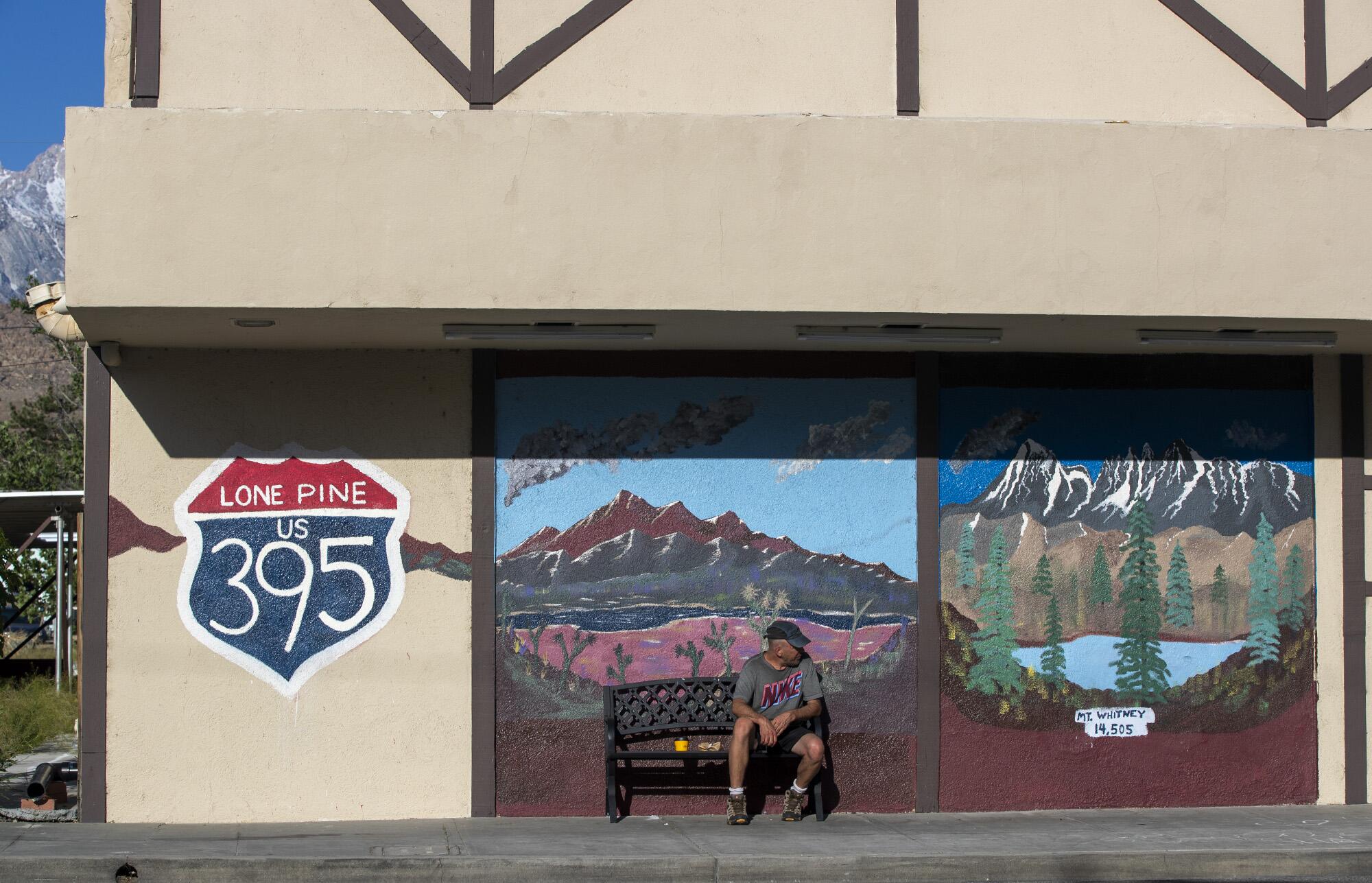
Breakfast at the Mt. Whitney Restaurant in Lone Pine comes with a mix of accents and opinions. A French couple chat with two American hikers, and regulars hold court one table over.
Dressed in work shirts and caps, they declared themselves no fans of Nancy Pelosi or Dianne Feinstein. “They’ll never understand us,” a third-generation valley resident said of the Democratic House speaker and the U.S. senator.
“They want to lock up the land for more wilderness, but we need the jobs,” he said, pivoting to make the case for mining: “more sustainable than tourism,” he said, especially as ski resorts struggle with diminished snowpack and shorter seasons.
While declining to give their names, they readily declared their indifference over who will represent the new congressional district and said they would either leave that box on the ballot empty or vote along party lines.
But Cheyenne Stone, 33, speaking on the phone during her commute from Mammoth to Big Pine, had a different perspective. Assistant to the chief administrative officer of Mono County, she looks forward to meeting either Kiley or Jones.
Our needs are great, she said, for housing, day care, healthcare and infrastructure like broadband. “It is sad to see a lack of resources for rural communities, whose economic well-being and sustainability are so vulnerable.”
When Stone, a member of the Big Pine Paiute Tribe, considers the future of the district, she thinks of a willow basket and what she needs for each coil to be strong and supple.
“I need water,” she explained. “In order to have water, I need access to land. Access to land requires stewardship. Without that, I wonder if I will be able to make a basket.”
Biden won Rep. Julia Brownley’s Ventura County district by 20 points. Is Republican spending here a sign of confidence or overreach?
More to Read
Get the L.A. Times Politics newsletter
Deeply reported insights into legislation, politics and policy from Sacramento, Washington and beyond. In your inbox three times per week.
You may occasionally receive promotional content from the Los Angeles Times.
